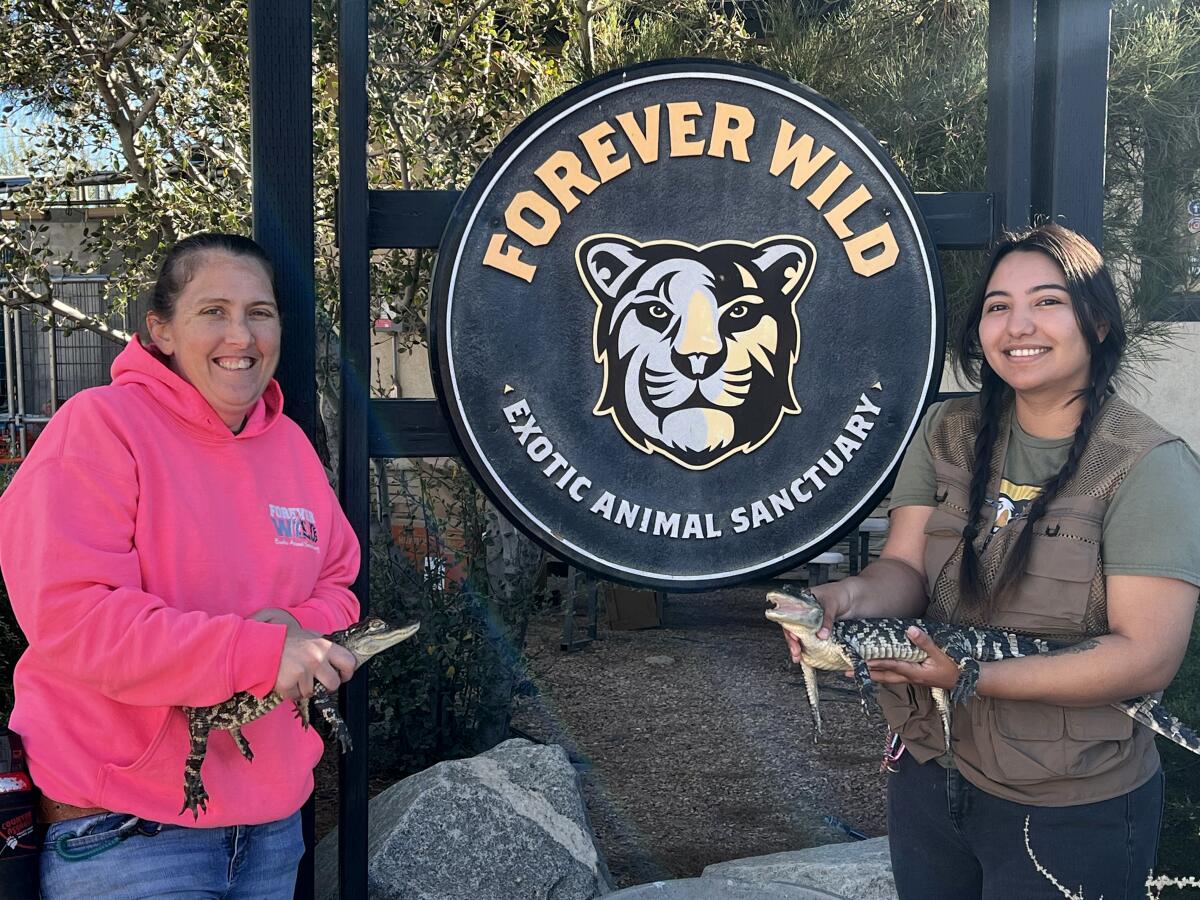Two baby alligators seized at San Bernardino home under investigation for squatters

- Share via
San Bernardino police were recently investigating a squatters case at a residence when they made a surprising discovery inside: two baby alligators.
The alligators, which were apparently being kept as pets, were discovered at a home on Santa Fe Street late last month, according to police and local media reports.
The reptiles were initially taken to the city’s animal shelter but, with the assistance of California Fish and Wildlife, they have since been relocated to the Forever Wild Exotic Animal Sanctuary in Phelan, officials said.
“They weren’t kept in the best of conditions, but they’re doing OK,” said Kiah Almquist, the sanctuary’s manager and daughter of founder Joel Almquist. The animals each measured 12 to 24 inches long and were covered in white paint, Almquist said. Keepers are still working to remove the white paint from the animals, heal their dry skin, and put the alligators on a balanced diet of raw meat and “pinkies” — previously frozen baby mice often fed to reptiles.
Loki and Sylvie, named after characters on the Disney+ show “Loki,” are being held in a quarantine environment while the sanctuary raises money to build them a more permanent home. It will likely be years before the babies are big enough to be introduced into the sanctuary’s main pond, which is inhabited by eight adult alligators that each measure about 8 feet long.
Exotic animals like alligators are not allowed to be kept as pets in most cities, including San Bernardino. Nonetheless, it is not unusual for people to keep a wide range of animals in and around their homes.
Almquist said she routinely receives calls asking the sanctuary to accept animals that include alligators, snapping turtles, ferrets and sugar gliders — though the sanctuary is also home to tigers, bears and hyenas. The sanctuary is left to piece together the clues of what happened to the animals, like why the baby alligators arrived with white paint all over them. A Capuchin monkey once arrived who had been fed nothing but candy.
“The sad part is that if [the government] can’t find a place to bring these animals, they have to be euthanized,” she said. And although a baby alligator might seem like an appealing companion, it can become quite dangerous as it grows older and larger.
“When they’re babies, they’re cute. No one thinks anything will happen to them — a bite will be like a little pinch. But when they’re older they do something called a death roll,” in which the alligator bites their prey and then spins around quickly in the water to remove a chunk of meat. “They don’t care that you take care of them. They’re a reptile and they’re going to eat what’s in front of them.”
Owners often release the alligators into lakes and rivers as they get larger, Almquist said, where they out-compete the native species or just pass away. In March, the sanctuary rescued two alligators that had been dumped into a river in Temecula.
As for Loki and Sylvie, Almquist said everyone at the sanctuary is “super excited about them right now.” She invites members of the public to visit the juvenile alligators along with the sanctuary’s more than 200 other animals. The sanctuary charges an admission and the money goes towards the care of the animals, she said.
More to Read
Sign up for Essential California
The most important California stories and recommendations in your inbox every morning.
You may occasionally receive promotional content from the Los Angeles Times.














